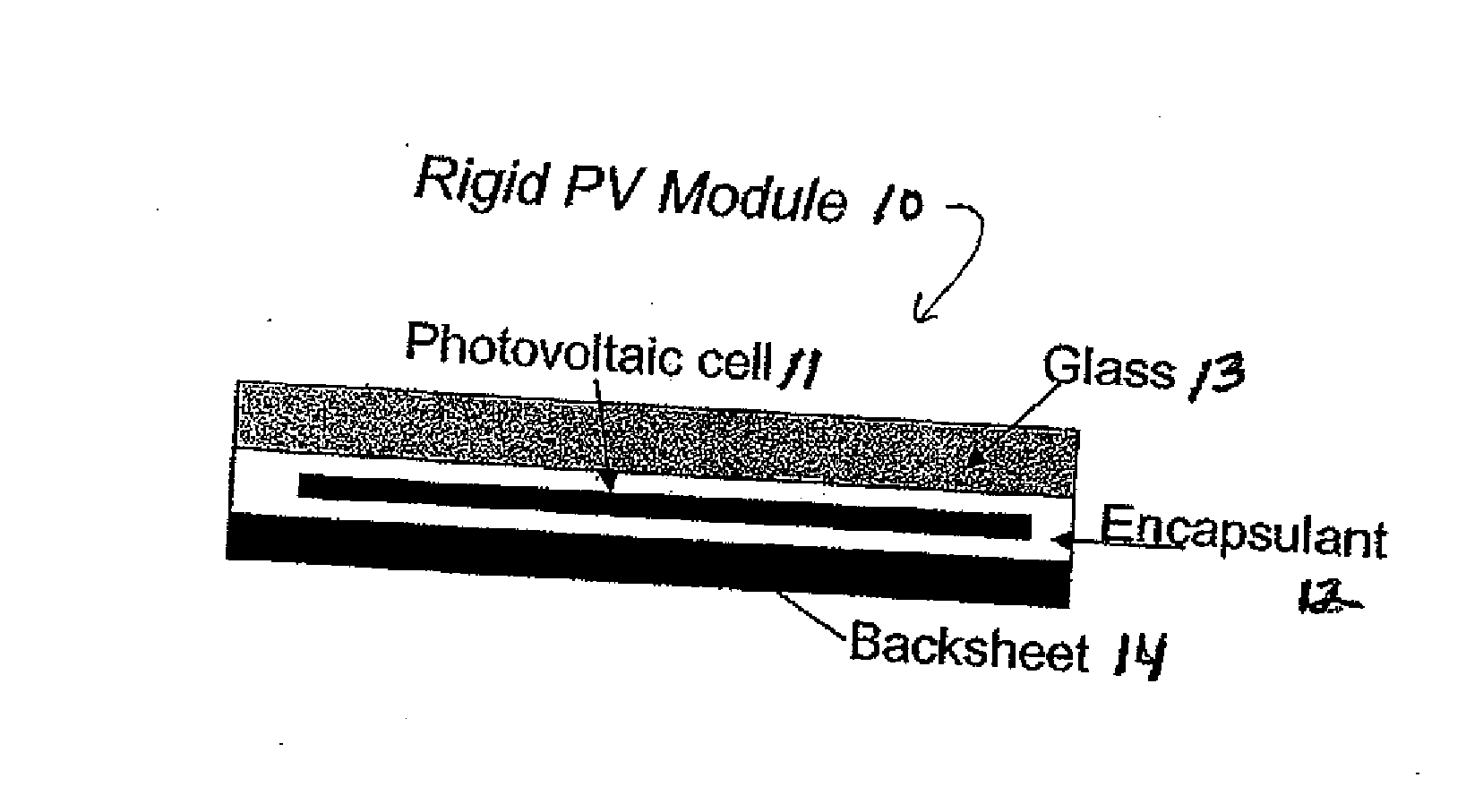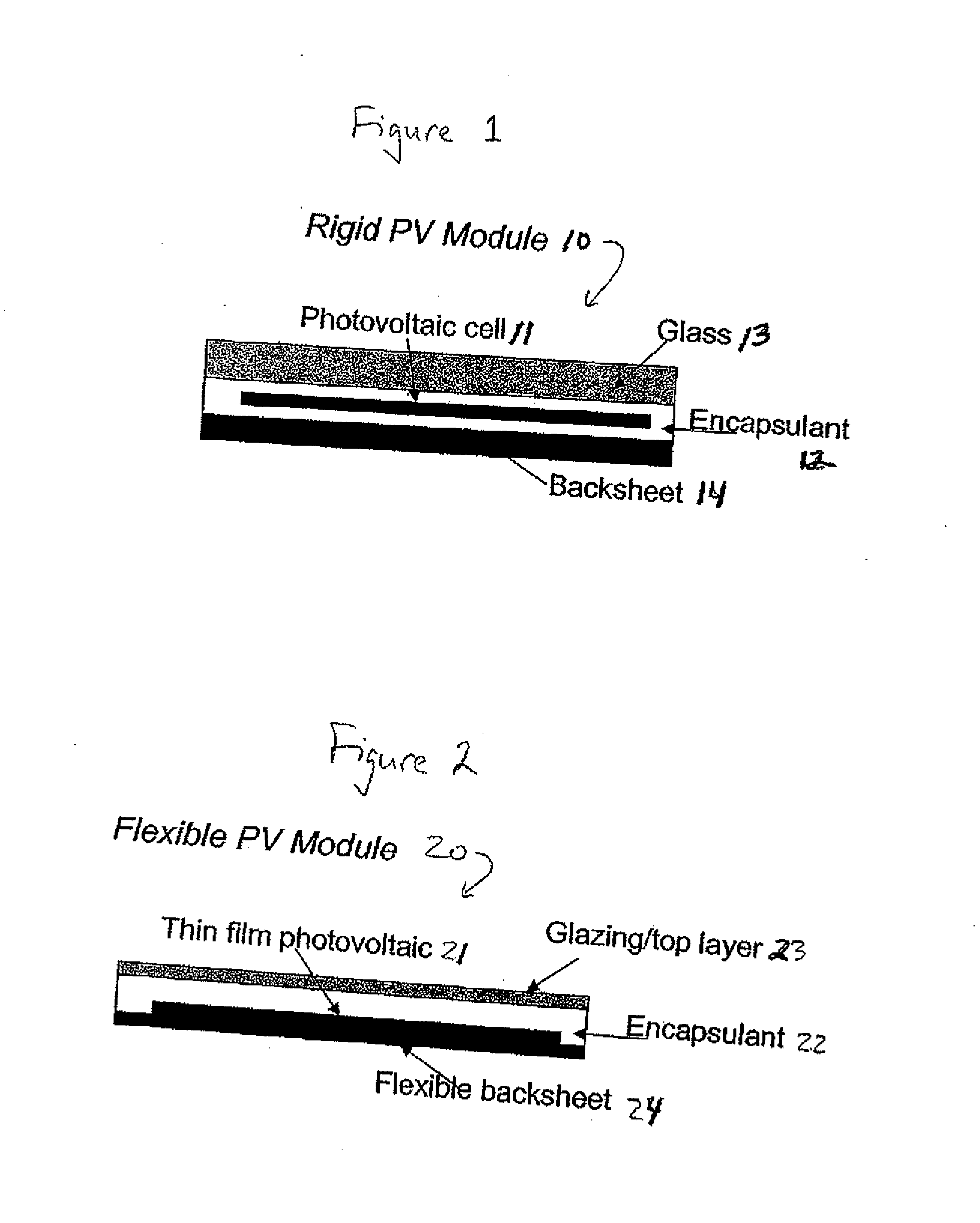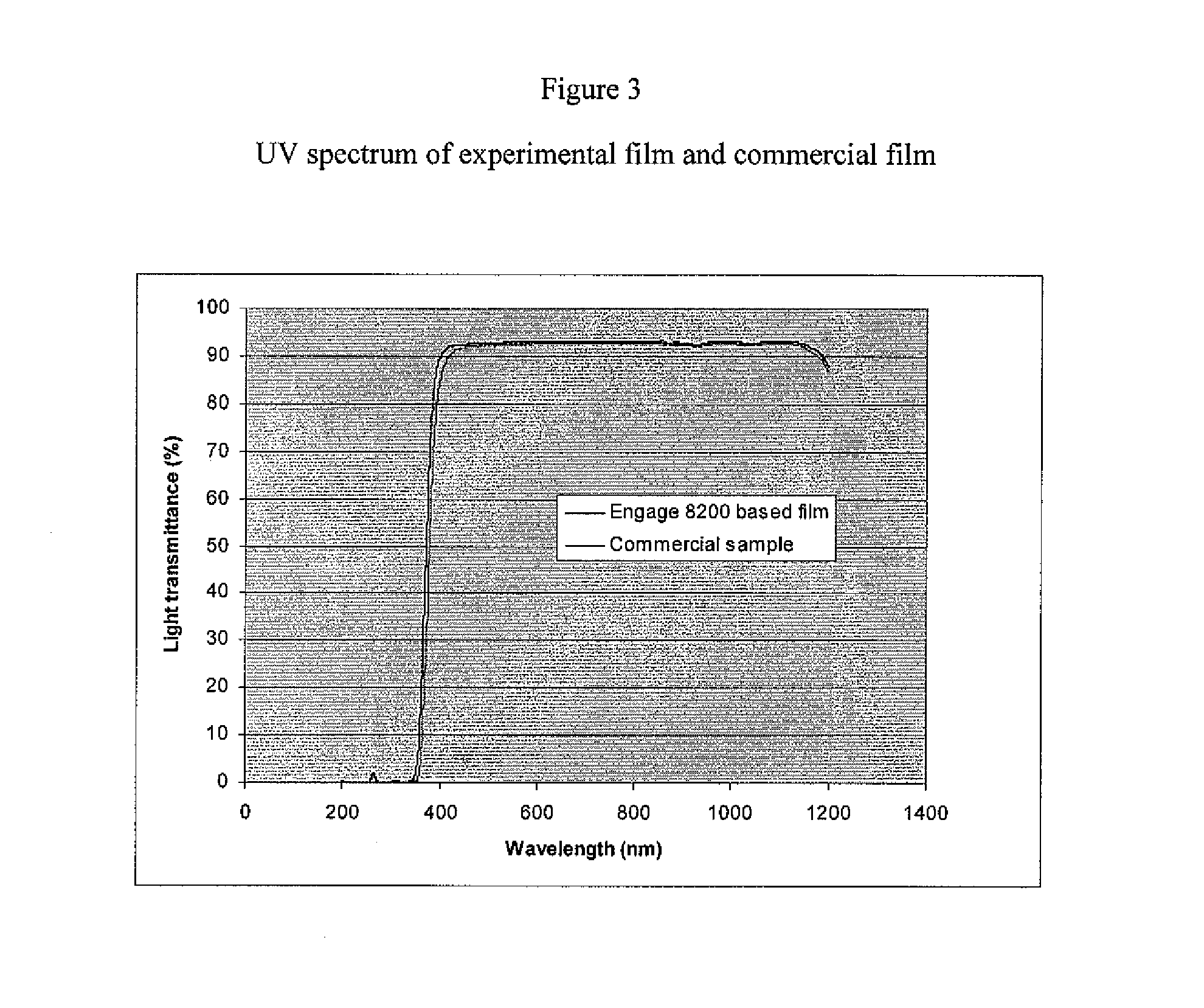Electronic Device Module Comprising Polyolefin Copolymer
- Summary
- Abstract
- Description
- Claims
- Application Information
AI Technical Summary
Benefits of technology
Problems solved by technology
Method used
Image
Examples
specific embodiments
Example 1
[0078] A monolayer 15 mil thick protective film is made from a blend comprising 80 wt % of ENGAGE® 8400 polyethylene (ethylene / 1-octene, 30 MI, 0.87 g / cc), 20 wt % of a maleic anhydride (MAH) modified ethylene / 1-octene copolymer (ENGAGE® 8400 polyethylene grafted at a level of about 1 wt % MAH, and having a post-modified MI of about 1.25 g / 10 min and a density of about 0.87 g / cc), 1.5 wt % of Lupersol® 101, 0.8 wt % of tri-allyl cyanurate, 0.1 wt % of Chimassorb® 944, 0.2 wt % of Naugard® P, and 0.3 wt % of Cyasorb® UV 531. The melt temperature during film formation is kept below about 120 C to avoid premature crosslinking of the film during extrusion. This film is then used to prepare a solar cell module. The film is laminated at a temperature of about 150 C to a superstrate, e.g., a glass cover sheet, and the front surface of a solar cell, and then to the back surface of the solar cell and a backskin material, e.g., another glass cover sheet or any other substrate. The p...
example 2
[0079] The procedure of Example 1 is repeated except that the blend comprised 90 wt % ENGAGE® 8400 (ethylene / 1-octene, 30 Mi, 0.87 g / cc) and 10 wt % of a maleic anhydride (MAH) modified ethylene / 1-octene (ENGAGE® 8400 polyethylene grafted at a level of about 1 wt % MAH, and having a post-modified MI of about 1.25 g / 10 min and a density of about 0.87 g / cc), and the melt temperature during film formation was kept below about 120° C. to avoid premature crosslinking of the film during extrusion.
example 3
[0080] The procedure of Example 1 is repeated except that the blend comprised 97 wt % ENGAGE® 8400 (ethylene / 1-octene, 30 Mi, 0.87 g / cc) and 3 wt % of vinyl silane (no maleic anhydride modified ENGAGE® 8400 polyethylene), and the melt temperature during film formation was kept below about 120° C. to avoid premature crosslinking of the film during extrusion.
Formulations and Processing Procedures:
[0081] Step 1: Use ZSK-30 extruder with Adhere Screw to compound resin and additive package with or without Amplify.
[0082] Step 2: Dry the material from Step 2 for 4 hours at 100 F maximum (use W&C canister dryers).
[0083] Step 3: With material hot from dryer, add melted DiCup+Silane+TAC, tumble blend for 15 min and let soak for 4 hours.
TABLE 1FormulationSample No.1Engage 8400 (ethylene / 1-octene, 30 MI, 0.870 g / cc.)94.74-Hydroxy-TEMPO0.05Cyasorb UV 5310.3Chimassorb 944 LD0.1Tinuvin 622 LD0.1Naugard P0.2Additives below added via soaking stepDicup-R Peroxide2Gamma-methacrylo-propyl-trimet...
PUM
| Property | Measurement | Unit |
|---|---|---|
| Fraction | aaaaa | aaaaa |
| Fraction | aaaaa | aaaaa |
| Density | aaaaa | aaaaa |
Abstract
Description
Claims
Application Information
 Login to View More
Login to View More - R&D
- Intellectual Property
- Life Sciences
- Materials
- Tech Scout
- Unparalleled Data Quality
- Higher Quality Content
- 60% Fewer Hallucinations
Browse by: Latest US Patents, China's latest patents, Technical Efficacy Thesaurus, Application Domain, Technology Topic, Popular Technical Reports.
© 2025 PatSnap. All rights reserved.Legal|Privacy policy|Modern Slavery Act Transparency Statement|Sitemap|About US| Contact US: help@patsnap.com



